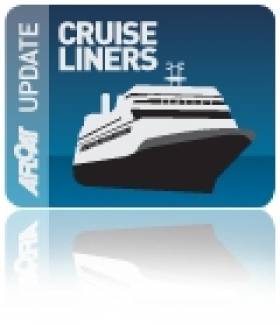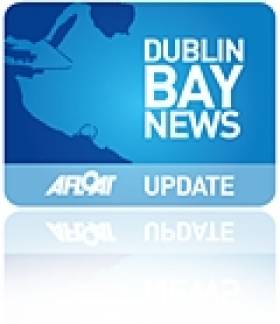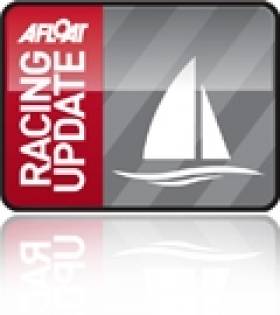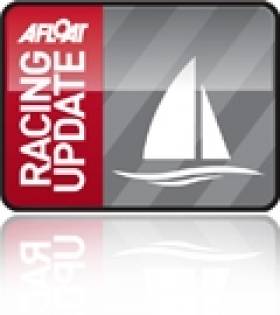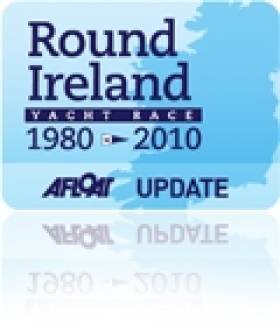Displaying items by tag: Dun Laoghaire
New Business Could Float in on the Tide
Local TD and Minister of Sport Mary Hanafin has given her support to Dun Laoghaire Harbour Company's initiative to promote the town as a cruise tourism destination on Dublin Bay. Writing in her latest newsletter to constituents this month, the Minister says she will do everything within her remit to support the bid.
Minister for Sport Goes Sailing
Minister for Sport and local TD Mary Hanafin made good on a long-standing promise to go sailing when she joined 'Wow' (Women on the Water) scheme that held a one-day event at the National Yacht Club in Dún Laoghaire, yesterday.
Beginners and experienced women sailors joined the initiative sailed in the Irish Sailing Association's fleet of J80 Sportsboats. Former Olympian Cathy MacAleavey, who organised the day, steered the Minister's yacht called Dun Laoghaire Marina. Photos by Michael Chester are below:
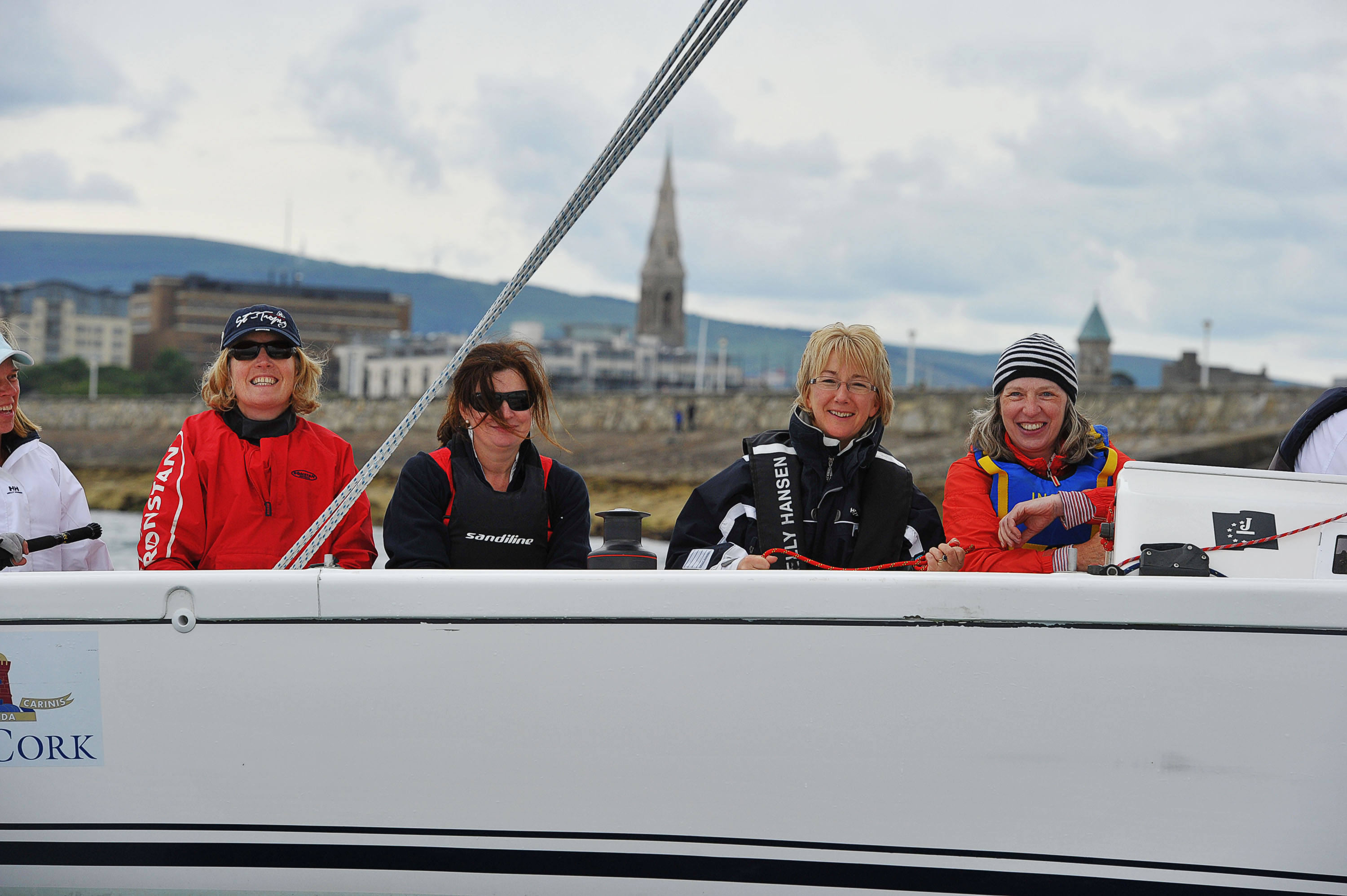
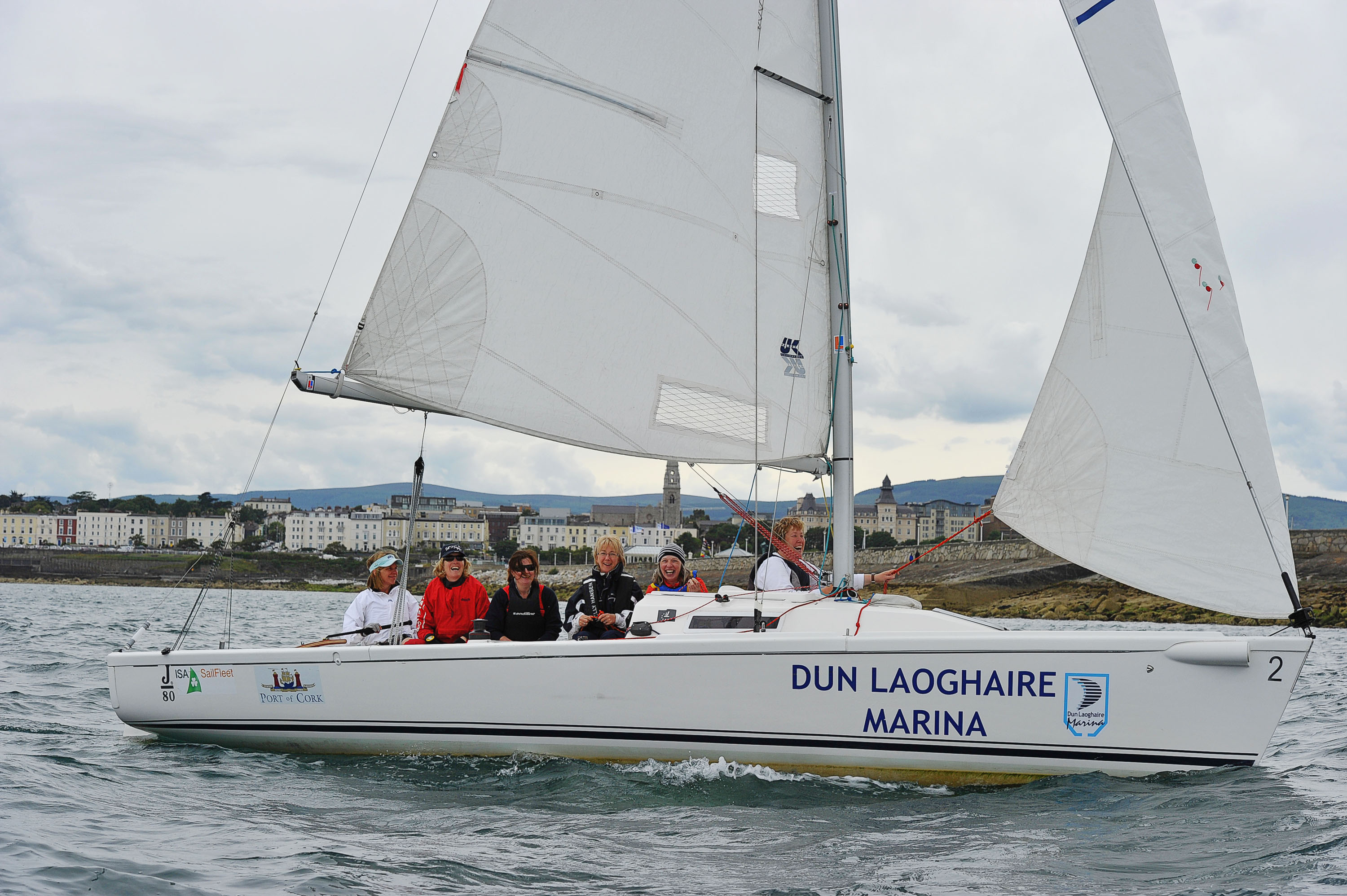
Flor O'Driscoll's Championship winning J24 has added another title to the cabinet this week when Dublin Bay Sailing Club released the 28 winners of its first mid-week series. O'Driscoll who picked up the overall award at last year's 2009 Volvo Dun Laoghaire Regatta is back in form taking the honours now in Class three.
DBSC organises racing on the bay for all the waterfront yacht clubs in Dun Laoghaire and the town marina, producing a combined fleet of nearly 300 boats. Its Thursday night fleet is one of the biggest yacht club turnouts in Europe.
George Sisk's Wow won Class Zero on IRC Handicap. A combined prize Cruisers Zero and One was was also awarded and this went to John Maybury's J109 Joker. ECHO honours in class zero went to Round Ireland entrant Tsunami sailed by Vincent Farrell. In the one design fleets Dick Lovegrove's Rupert was top in the Sigma 33s and Frank Hamilton's dinghy Dunmoanin' was the IDRA 14 winner. The first series winners are published below:
Midweek IRC Series 1:
Cruisers 0: WOW (George Sisk)
Cruisers 1: Jalapeno (Dermod Baker & others)
Combined Crs 0 & Crs 1: Joker 2 (John Maybury
Cruisers 2: Jawesome 2 ( Vivion Kennedy & others)
Cruisers 3: Hard on Port ( Flor O'Driscoll)
White Sails: Act 2 : Michael O'Leary & others
Midweek Echo Series 1:
Cruisers 0: Tsunami (Vincent Farrell)
Cruisers 1 Jalapeno (Dermod Baker & others)
Combined Crs 0 & Crs 1: Jalapeno (Dermod Baker & others)
Cruisers 2: Red Rhum (J. & C.Nicholson)
Cruisers 3:Asterix (J. Counihan & others)
Cruisers 4: Maranda (Myles Kelly)
White Sails: Act 2 : (Michael O'Leary & others)
31.7s Flying Machine (Conor O'Gallagher)
Midweek: One Designs: Series 1
Sigma 33s: Rupert (R.Lovegrove & P. Varian)
31.7s: Prospect (Chris Johnston)
Shipmans: Curraglas (John Masterson)
Dragons Diva (R. Johnson & T. Goodbody)
Ruffians: Ruffles (Michael Cutliffe)
Glens: Glendun (B.Denham & others)
SB3s: Sin Bin (Barry O'Neill)
Flying 15s:Fifty Somethings (David Mulvin)
Mermaids: Tiller Girl (Jonathan O'Rourke)
Squibs: Little Demon: (Marie Dee & Sheila Power)
Fireballs: Elevation (Neil Colin & Margaret Casey)
IDRA 14s: Dunmoanin' (Frank Hamilton)
Portsmouth Y'stick: Laser 178952 (Peter Craig)
Water Wags: Moosmie (David McFarlane)
There is regular DBSC coverage on Afloat.ie. Results posted immediately after race HERE
Elevation Earns DBSC Fireball Win
Neil Colin at the helm of Fireball dinghy Elevation was the winner of tonight's Dublin Bay Sailing Club race sailed at low water in Scotsman's bay. Colin crewed by M.Casey beat experienced campaigner Louis Smyth sailing Licence to Thrill. Third was Frank Miller's Blind Squirrel. Conditions were light for the Tuesday night sailing that was also sailed by some of the clubs cruiser classes. Full Results here:
DUBLIN PORT Dublin Bay Sailing Club Results for 29 JUNE 2010
CRUISERS 1 - 1. Powder Monkey (C.Moore/M.Byrne), 2. Something Else (J.Hall et al)
CRUISERS 2 - 1. Red Rhum (J Nicholson), 2. Free Spirit (John O'Reilly), 3. Borraine (Ean Pugh)
CRUISERS 3 - 1. Asterix (J.Counihan/F.Meredith), 2. Grasshopper 2 (K & J Glynn), 3. Rattler 2 (Austin Whelan)
CRUISERS 4 - 1. Maranda (Myles Kelly), 2. Ghrazel (Charles Pearson)
FIREBALL - 1. Elevation (N.Colin/M.Casey), 2. Licence to Thrill (Louis Smyth), 3. Blind Squirrel (Frank Miller)
GLEN - 1. Glenluce (D & R O'Connor), 2. Pterodactyl (R & D McCaffrey), 3. Glenmiller (P Cusack)
IDRA 14 FOOT - 1. Dunmoanin (Frank Hamilton), 2. Squalls (Stephen Harrison), 3. Doody (J.Fitzgerald/J.Byrne)
MERMAID - 1. Lively Lady (G O'Neill & M Hanney), 2. Tiller Girl (J.O'Rourke), 3. Oonagh (J&M Griffith)
PY CLASS - 1. Ross O'Leary (Laser), 2. Peter Craig (Laser), 3. Joan Flanagan (Laser)
RUFFIAN 23 - 1. Diane ll (Bruce Carswell), 2. Golden Girl (Michael Carrigan et al), 3. Papillon (Paul Cassidy)
SHIPMAN - 1. Bluefin (B.Finucane et al), 2. Gusto (C Heath)
SIGMA 33 - 1. September Song (Conor Colleary), 2. Pippa lV (G.Kinsman/K.Blake/M.O'Brien), 3. Pastiche (John Peart et al)
SQUIB - 1. Tais (Michael O'Connell), 2. Periguin (N.Coakley/J.Redahan)
Champagne Sailing for Royal Irish Regatta
The Royal Irish offered up a full three courses of delectable conditions at the weekend, with beautiful blue skies and up to 25 knots on Dublin Bay for their annual regatta.
While the cruiser and one-design courses were kept out in the full force of the SE breeze beyond Scotsmans and into the middle of the bay, the dinghies were tucked away in relative calm in Seapoint.
Joining the dinghy fleet were a sizeable Laser contingent from the ISA's development squad, who dominated the prizes in the Radial fleet. 20 SB3s entered the event, making theirs the largest fleet with the Beneteau 31.7s not far off with 16 entries.
A full list of all prize winners is attached below, or downloadable from the RIYC website HERE.
300 Expected at BMW Royal St. George Yacht Club Regatta
Over 300 entries are expected, with a combined crew of over 1,000 sailors for the BMW Royal St. George Yacht Club regatta in Dun Laoghaire.
The full day event will take place on 3 July at the Royal St. George Yacht Club in Dun Laoghaire. More than 20 different sailing classes will be represented on the day and compete on three courses in Dublin Bay.
The George Regatta is a biennial event and has a long standing tradition, leading back to the year 1844. It is one of the biggest and most prestigious events in the Irish Sailing Calendar and traditionally accompanied by the Irish Navy. This year, the LE Roisin will be sent to accompany all racing activities.
“The BMW George Regatta promises to be an excellent sailboat racing for our members and visitors, as well as a fun day out for all the family. We are delighted to have BMW Ireland, in association with Murphy and Gunn, onboard and supporting our 172nd Club Regatta. Indeed, Saturday, the 3rd July promises to be a spectacular occasion both ashore and afloat,” says Patrick Blaney, Commodore of the Royal St. George Yacht Club.
The full day event will commence with registration in the morning and races starting at 11am. Sailors are expected to arrive back at around 3pm and the prize giving will take place at around 6pm.
Hospitality and entertainment throughout the day, including a Ladies’ Fashion Lunch and various bands, will be provided for those who stay on shore.
Sun Shines on Dun Laoghaire Squibs
More than 70 boats and 400 sailors, their families and friends from Ireland and the UK converged on Dun Laoghaire this weekend for the start of the biggest event in the sailing calendar in Dublin Bay this year. All the photos (by Gareth Craig) from Race one of the Squib National Championships are here.
70 Squibs Head for Dun Laoghaire
More than 70 Squibs will converge on Dun Laoghaire this weekend for the start of its SF Marinas sponsored UK national championships.
The championships, which are held in Ireland every five years, will see some of the top competitors in this class including Dick Batt, a sailmaker and chief measurer for the Beijing and London Olympics and Irishman Owen Delaney, former Irish Helmsman Champion of Champions.
There is also keen interest from a wide range of clubs including the Royal North of Ireland Yacht Club and Kinsale Yacht Club at the other end of the Island.
Squibs are two-man keelboats measuring seven metres long. They are favoured both as an exciting racing boat, because of their strength and safe design, and as a teaching boat. The Squib Class fleet is one of the largest one-design fleets in Britain and Ireland, with over 810 boats.
The Royal St George Yacht Club says it is delighted to have been selected by the Squib Class to host the 2010 Championship which is a great opportunity to show what Dublin Bay can offer, including its beauty, the varied sailing waters, and the vagaries of the tides.
“We believe Dun Laoghaire, both on and off the water, is a wonderful venue to make Squibs 2010 a memorable event.”
The sponsors of this year’s championship are marine services company, SF MARINA IRELAND, which last month installed new, all concrete, breakwater pontoons at the Royal Saint George Yacht Club, a great addition to the clubs facilities.
SF MARINA IRELAND builds marinas and installs floating pontoons and breakwaters all over the island of Ireland as well as the UK. The directors are Rod and Julie Calder-Potts who trade under the name, Milford Marina Systems, based in Cuffesgrange, Co Kilkenny.
Recently, the company designed and fitted concrete pontoons weighing 1,000 tonnes on the River Liffey to service the Waterbuses Spirit of Docklands and Liffey Voyage. The project consisted of a mega yacht visitors berthing facility on the Custom House Quay and three waterbus landing stages - one at The Point, one south-east of The Ha’Penny Bridge and one at the mouth of George’s Dock on Custom House Quay.
SF MARINA IRELAND is the sole Irish agent for Swedish company SF MARINA specializing in the supply and installation of floating concrete breakwaters that can stand up to the rigorous maritime conditions.
Rod Calder Potts said the company is very proud to be associated with the historic Royal Saint George Yacht Club and with the Squibs National Championships.
He said the installation of the new pontoons last month was the company’s third major installation in Dun Laoghaire Harbour and the eighth in the Dublin Bay area. “We enjoy the challenge of dealing with the difficult Irish tides, winds and waves. It is a pleasure and a privilege dealing with the wonderful sailing clubs around Dublin Bay.” he said.
Round Ireland Yacht to be Blessed
An entry in the Round Ireland Yacht Race will be blessed in an interdenominational ceremony in Dun Laoghaire Harbour on Friday, prior to departing for the race.
The blessing of boats going to sea is an Irish tradition practiced all around the coast of Ireland.
The yacht is the 60 foot "Spirit of Rosslare Europort" that has competed in Round the World Races on four occasions, the fastest boat entered in the race.
The ceremony at Dun Laoghaire marina will be conducted by Fr John McDonagh from Dalkey and Rev. Gary Dowd from Glenageary.
More on the Round Ireland Yacht Race:
Round Ireland Yacht Race 2010 Review
Round Ireland Yacht Race, Ireland's top offshore fixture
A Round up of 80 stories on the 2010 Round Ireland Yacht RaceA turnout estimated in excess of 350 people produced Euro 500,000 in sales at a Used Boat Show in Dun Laoghaire at the weekend. The Coal Harbour based marine firm, MGM Boats Ltd say the three day show led to at least seven boat sales. The boats, both sail and power craft, were from the company's brokerage list and represented a significant uplift in business. "The mood has changed, show goers were drawn from our existing customers and those definitely interested in boating", said the firms Gerry Salmon.
Sales of boats varied from a Moody 31 Sailing Cruiser that is staying locally to Jeanneau motorboats; a leader 805, a Prestige 34 foot and Prestige 30 foot. Deposits were also taken on a Sea Ray 250 DA speedboat, a small brig RIB and a Maxum 25 speedboat.


























